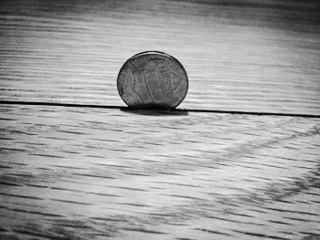 Even if you haven’t had a chance to look at the weather channel predictions for the next 10 days (and then some) in the Chicago area, you’re probably reminded of the brutally cold temperatures as you apply hand lotion to your cracked knuckles. And maybe an equal reminder is the increasing gap size between the wooden floorboards on which you stand. Cold weather has some adverse drying effects on both skin and the wood found throughout your home.
Even if you haven’t had a chance to look at the weather channel predictions for the next 10 days (and then some) in the Chicago area, you’re probably reminded of the brutally cold temperatures as you apply hand lotion to your cracked knuckles. And maybe an equal reminder is the increasing gap size between the wooden floorboards on which you stand. Cold weather has some adverse drying effects on both skin and the wood found throughout your home.
Recently, we posted about the material options when it comes to your cabinet boxes and how plywood is more forgiving when it comes to moisture and humidity – Chicagoans know humidity extremes all too well, but you shouldn’t let it scare you from designing with wood throughout your home.
Whats the deal with humidity and wood?
A valid question. Just like skin, which relies on water to stay hydrated (have you drank your 8 glasses of water today?), wood also has a natural affinity to water. Now, we will get a little bit scientific. When wintertime rolls around, so does the cold…and cold air naturally holds a lower density of water molecules than hot air. When we crank up the heat, we lower the relative humidity even more.
When the relative humidity is high, the wood sucks up the water – when the moisture is low, there is less for the wood to pull…and so the wood dries out (often contracting, gapping and even cracking).
How to care for your woods in winter
So now that you know what happens, should you live in fear – avoiding woods at all costs? Of course not – there are ways to monitor humidity and put moisture back in the air, which is good for your wooden floors, cabinets, baseboards and furniture; and it’s good for your skin and health as well. Here are some recommendations:
Buy a humidity monitor – If you don’t have a humidity monitor in your home, it’s time to get one. You can purchase one for under $10, and the tool will measure the humidity in the area it resides. A general rule of thumb is to keep the humidity in your home between 30% and 50%.
Use a humidifier - If the humidity in your home drops below 30%, you should try to pump some moisture back in the air by using a humidifier. Just be sure to pay attention to the square footage the humidifier can handle, and clean it regularly.
Know when to stop – Don’t let your humidity get too much higher than 50%, or the woods in your home will have the opposite issue – expansion – which can lead to cupping and warping. Your home can also start to grow mold if conditions are too moist. If the humidity in your home is too high, especially during summer months, the air conditioner can be a useful tool in eliminating some of that humidity…and if that isn’t enough, a dehumidifier will do the trick.
Don’t be afraid to install wood throughout your home…just make sure you monitor conditions and take care of your wood. If you have any questions regarding your cabinets, floors and furniture when it comes to moisture and humidity, ask your supplier. When in doubt, try to keep your humidity somewhere between 30% and 50%, and you should be fine.

